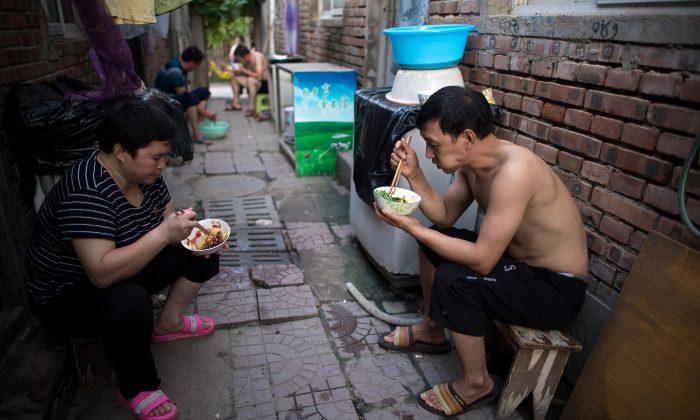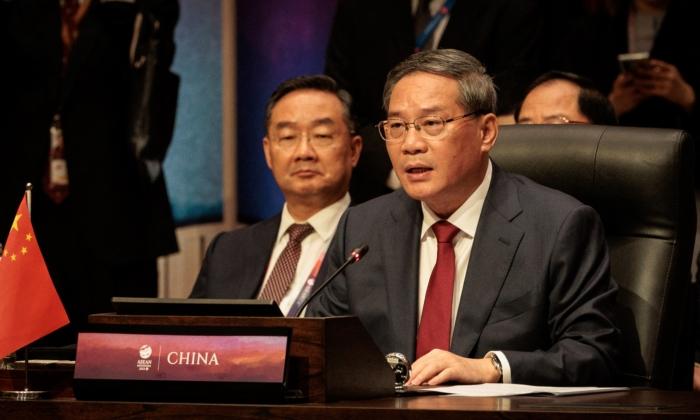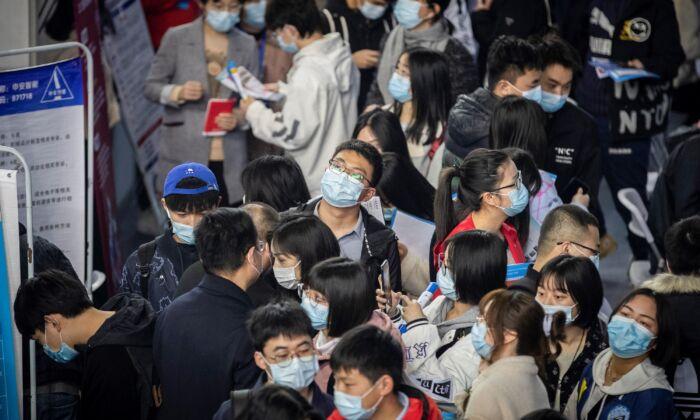Poverty Alleviation in Guizhou Province
Local officials in Guizhou Province announced on Nov. 23, 2020 that the last nine impoverished counties they identified in 2019 were lifted out of poverty.Beijing’s mouthpiece Xinhua News Agency reported that Li Jian, director of Guizhou’s poverty alleviation and development office, said at a press briefing, “The average annual net income of impoverished people in these nine counties has risen to 11,487 yuan, well above the 4,000 yuan national poverty line set this year, also 1,562 yuan [about $234] higher than the per capita net income of 9,925 yuan [about $1,518] among the poorest group in Guizhou.”
So far, all 66 poverty-stricken counties in Guizhou have been lifted out of poverty and “all 832 counties nationwide on the poverty list established by the State Council Leading Group Office of Poverty Alleviation and Development have been lifted out of poverty,” the report said.
According to a report published by Chinanews.com on Nov. 23, Tang Chengpei, deputy minister of the Ministry of Civil Affairs, said at a press conference that the national minimum allowance for each rural resident is 5,842 yuan [about $901] per year and their monthly allowance is 289 yuan [about $44].
The report sounds too good to be true and something doesn’t add up due to the following reasons.
First, at the beginning of 2020, the nine impoverished counties reported a per capita income of under 4,000 yuan [about $617]. In less than 11 months, net income jumped to 11,487 yuan [about $1,772] per person, an increase of at least 7,487 yuan (about $1,155).
In other words, the per capita income of these counties increased by a factor of 2.87 this year. The number is unrealistic. This information has not been widely publicized by the Chinese media and they won’t refute the information.
Second, according to data from the Chinese Statistics Bureau, in 2019 the per capita disposable income of rural residents in the mainland was 16,021 yuan [about $2,472]. Income was sorted into five classes: the income of the low-income group was 7,380 yuan [about $1,139], the lower-middle-income group was 15,777 yuan [about $2,434], the middle-income group was 25,035 yuan [$3,862], the upper-middle-income group was 39,230 yuan [$6,052], and the high-income group was 76,401 yuan [about $11,787].
The data did not specify how many Chinese peasants or rural residents were included in the low-income group.
Compared with the national figures, the per capita net income of the nine Guizhou poverty-stricken counties and even the net income of its poorest group, significantly exceed the income of the low-income group in the mainland.
In other words, the most impoverished group in Guizhou should not be labelled low-income. So where are the low-income peasants in China?
The latest figures in Guizhou reflect that peasants in the low-income group are the real poor households in China today. A yearly income of 7,380 yuan equals a monthly income of 615 yuan, which is less than $100. Yet, Zhao Lijian, the Chinese Ministry of Foreign Affairs spokesman, described the wage increase as “a contribution to the world.”
Third, based on a per capita net income of 11,487 yuan [about $1,772] in nine poverty-stricken counties in Guizhou, the income of a family of three (two parents and one child) should be 34,461 yuan [about $5,317]; and a family of four should have an income of 45,948 yuan [about $7,089].
On Sept. 16, Guizhou Province adjusted the minimum monthly wage standard for the year 2020 to 1,600 yuan [about $247] for first-class areas, 1,500 yuan [about $231] for second-class areas, and 1,400 yuan [about $216] for third-class areas, effective Oct. 1.
According to the standard for the third category, the annual income of a family of three would be 33,600 yuan [about $5,183] if each parent receives 1,400 yuan [about $216] per month.
The income of a family of three in Guizhou’s nine poor counties exceeds the income of a family from third-class areas. Where are the poor?

A family of four with two children in a poor county has an average income of 45,948 yuan [about $7,089], but if the parents in a family of four earn the minimum wage, their income is still 33,600 yuan [about $5,183], making them even poorer.
The per capita income of nine poverty-stricken counties in Guizhou rose sharply this year, accidentally surpassing the national low-income group of people, and also surpassing the lowest-income families in the third-class area in mainland China. Guizhou’s poverty alleviation seems to have been accomplished, but it reflects the fact that there are poorer households. No wonder the CCP’s media dare not hype up the false figures.
Poverty-stricken Households in Beijing and Shanghai
The minimum wage in Guizhou may be considered ridiculously low, but what about other regions in China?On Nov. 24, Beijing announced that the minimum wage guarantee line of 26,400 yuan [about $4,073] is a comprehensive annual calculation based on last year’s adjusted minimum wage of 2,200 yuan [about $339] per month. This number is not much higher than the 1,600 yuan [about $247] in first-class areas in Guizhou. The minimum wage guarantee standard in Beijing involves workers in 13 industries such as food manufacturing, automobile manufacturing, housing construction, department store retailing, tourist hotels, real estate development and management, and publishing.
Among the 31 province-level administrative regions, the monthly minimum wage in Shanghai, Beijing, Guangdong, Tianjin, Jiangsu, and Zhejiang exceeds 2,000 yuan [$309], with Shanghai taking the lead over the country with a monthly minimum wage standard at 2,480 yuan [about $383].
The minimum wage guarantee standard of 26,400 yuan [about $4,073] means that the per capita income of a family of three or four will be even lower. It is no wonder that young couples are reluctant to have children.
China’s GDP per capita reached 70,892 yuan [about $10,937] in 2019, according to the regime. However, the Chinese Statistics Bureau reported that in 2019 the national per capita disposable income of residents was 30,733 yuan [about $4,741] and the per capita disposable income of urban households was only 42,359 yuan [about $6,535].
What’s the actual number of Chinese people living in poverty? After the poverty alleviation figures of Guizhou Province were announced, many lies were exposed. The regime recently rolled out economic policies that called for expanding domestic consumption. With such low incomes, where would the ability to consume come from?





